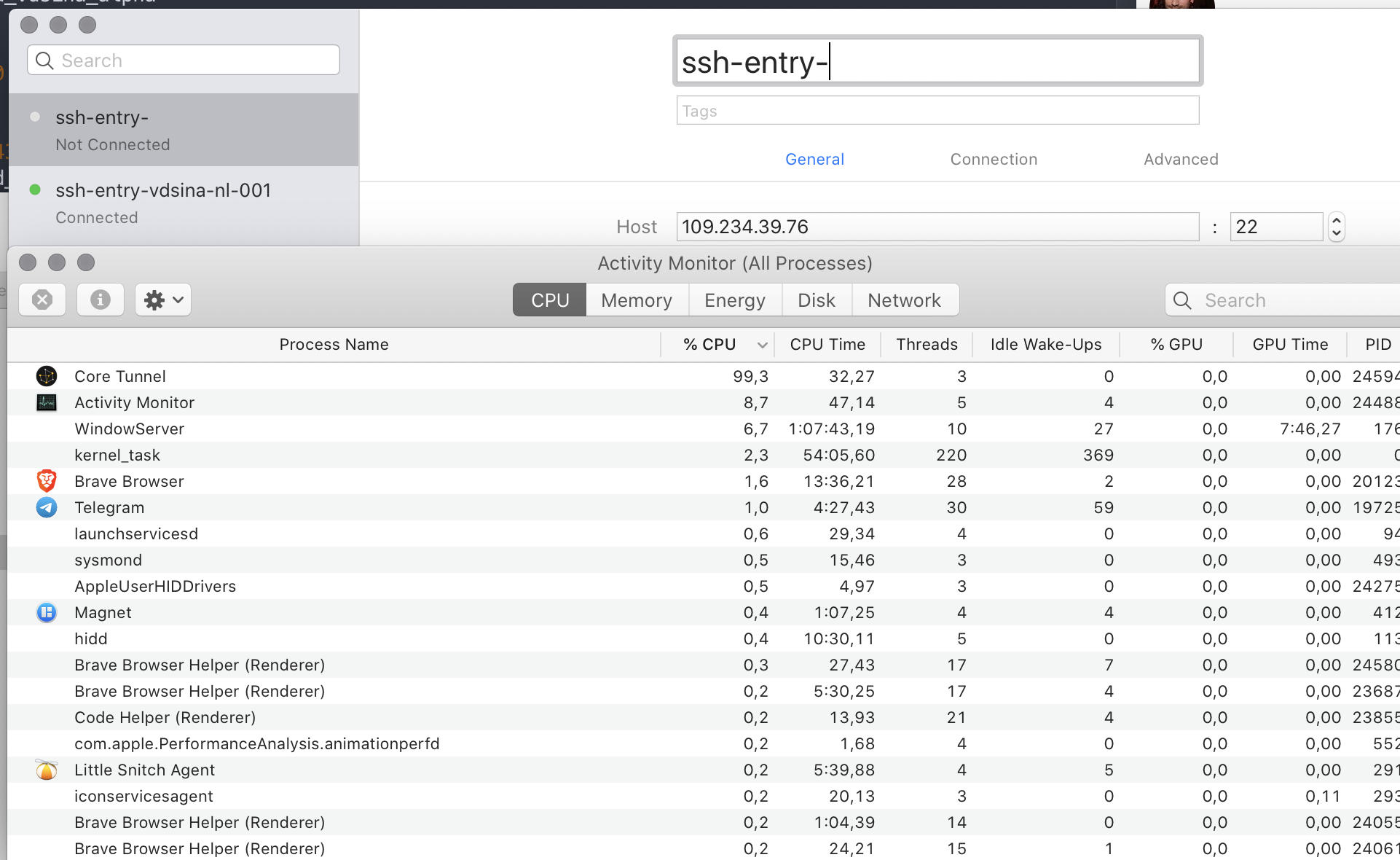

("VPN connection established and routing table repaired!\n") ("VPN connection established, routing table repaired and %d unfriendly firewall rules removed!\n" % len(unfriendly_firewall_ids)) Subprocess.Popen('sudo ipfw delete'.split(' ') + unfriendly_firewall_ids, stdout=subprocess.PIPE, stderr=subprocess.STDOUT).wait() Unfriendly_firewall_ids = list(set( for line in output_of('sudo ipfw -a list')])-good_firewall_ids) Subprocess.Popen(, stdout=subprocess.PIPE, stderr=subprocess.STDOUT).wait()
CORE TUNNEL FOR OSX PASSWORD
('Waiting for you to enter your VPN password in the VPN client.\n')

P = subprocess.Popen(, stdout=subprocess.PIPE, stderr=subprocess.STDOUT) Good_firewall_ids = set( for line in output_of('sudo ipfw -a list')])įor line in output_of('route get default'): Lines = subprocess.Popen(cmd if isinstance(cmd, list) else cmd.split(' '), stdout=subprocess.PIPE, stderr=subprocess.STDOUT).communicate() # Mine is 10.x.x.x so I just specify '10' but you could be more specific # The only thing you should need to configure is the vpn_ip_network.
CORE TUNNEL FOR OSX MAC
# a password at the start of the script, just enter your normal Mac login # The script does require admin (super user) access. # This script will fix that problem by repairing your routing table and # The Cisco An圜onnect VPN Client is often configured on the server to block When you run it, the script will save your firewall info, launch the An圜onnect client, wait for login, then fix the routes and firewall. Using the information from mehaase, I wrote a Python script that really simplifies this process on the Mac. My gateway is 10.0.1.1 - it is to the right of the "default" destination. For example, here's what it looks like on my box right now: Internet:ĭestination Gateway Flags Refs Use Netif Expireġ0.0.1.1 0:1e:52:xx:xx:xx UHLWIi 55 520896 en1 481 The easiest way to figure out the gateway is to run netstat -rn before logging into the VPN, and look at the IP address to the right of the "default" destination. So you want to change your default route back to what it was prior to getting on the VPN. When you log into a VPN that prevents split-tunneling, it is enforcing that policy by changing your routing tables so that all packets are routed on the virtual interface. In Tuan Anh Tran's case, it looks like the network is 192.168.5.0/24.Īs for which gateway to specify in the second command, it should be your local gateway. The 10 in the first command is the network that you want to route over the VPN.

I have since left the job where I was using the Cisco VPN, so this is from memory.
CORE TUNNEL FOR OSX HOW TO
I also found an explanation on how to run this automatically when you connect the VPN, but it's late on Friday and I don't feel like trying it :) Edit: I put it into a bash script, like this: $ cat vpn.sh Replace 192.168.0.1 with your local network's gateway. Replace 10 in the first command with the network that's on the other side of the tunnel. (I'm using OS X's built-in Cisco client, not the Cisco branded client.) sudo route -nv add -net 10 -interface utun0 Run these after connecting to the Cisco VPN.


 0 kommentar(er)
0 kommentar(er)
